VFR Phraseology for General Aviation in Europe
Oprócz klasycznej frazeologii i setek uwag oraz obserwacji, a także porad praktycznych zaprezentowano w książce, po raz pierwszy w lekkiej, przystępnej formule, autentyczne, dynamiczne komunikacje w długich lotach po najpiękniejszych przestrzeniach w Europie. Każdej komunikacji towarzyszą komentarze, gdzie jesteśmy, z kim rozmawiamy i co robimy.
Oprócz klasycznej frazeologii i setek uwag oraz obserwacji, a także porad praktycznych zaprezentowano w książce, po raz pierwszy w lekkiej, przystępnej formule, autentyczne, dynamiczne komunikacje w długich lotach po najpiękniejszych przestrzeniach w Europie. Każdej komunikacji towarzyszą komentarze, gdzie jesteśmy, z kim rozmawiamy i co robimy.
9 państw, kilkanaście przelotów przez wszystkie rodzaje przestrzeni dostępne da prywatnego pilota i ... wiele zadziwiających przygód oraz niespodzianek, które każdemu mogą się przytrafić w locie. Autorzy pokazali przy okazji najpiękniejsze miejsca w Europie, do których naprawdę warto polecieć.
Książka jest skarbnicą wiedzy o praktycznym wykonywaniu lotów VFR w Europie.
Informator, instruktor oraz egzaminator FIS z 40 letnim doświadczeniem w różnych służbach ATS oraz pilot prywatny spędzający w samolocie ponad 600h w roku i wykonujący w Europie co roku ponad 400 rekreacyjnych i biznesowych lotów dzielą się swoją wiedzą i doświadczeniem z dwóch stron częstotliwości radiowej.
In addition to classic phraseology and hundreds of remarks and observations, as well as practical advice, the book presents, for the first time a light, accessibly formatted, authentic, dynamic series of communications completed during long flights across the most breathtaking parts of European airspace. Each communication is accompanied by comments on where we are, what we are doing and Cho we are talking to.
The book covers flights across 9 countries, several transits through all types of airspace available to private pilots, and features many surprising adventures and unexpected experiences that can occur during flight. The authors also showcase the most beautiful destinations in Europe that are truly worth flying to.
The book is a treasure trove of knowledge about practical execution of VFR flights in Europe.
A FIS officer, instructor, and Aviation English Examiner with 40 years of experience in various ATS services, and a private pilot who spends over 600 hours a year in the air, performing over 400 recreational and business flights annually in Europe, share their knowledge and experience from both sides of the radio frequency.
Sky Talk: VFR Tales Across Europe
We land on a tiny private airstrip in Germany and a few days later take off from a large international airport in Norway. We fly through military airspace in France, and over the Danish straits, where controllers suddenly lose our flight plan. Our chatter over the taiga in Sweden on air-to-air frequency is heard by Finns across the Bothnian Bay who greet us from afar, and invite us to a barbecue and sauna.
We play with phraseology in our flights and in the book: changing flight plans with FIS and flying to an alternate because a thunderstorm with hail (weather issue) has approached our destination airfield. With a Swedish controller, we search for fuel (fuel issue) and wake up handling (frequency and radio problem), who accidentally turned off the radio.
We pay attention to phraseological nuances in different pieces of airspace: We show how traffic information works in Sweden and Norway in G airspace on the area frequency (radar). We inform Czech FIS about our nefarious mountain activities in G airspace, and ask Slovak controllers for clearance for magical actions at high altitudes in the mystical Carpathian C space. We tease the Norwegian TWR with an intoxicating date in the magical fjords beyond the Arctic Circle, and the French controller with a perverse photo session over the Palace of the Popes. A cheerful FIS officer, Mr. Chatterbox, informs us with joyful Traffic Information about two military Hercules planes flying low over house chimneys towards our landing site; and when we ask about their intentions, he replies, „Who knows, they're strangers." The Approach Controller complicates our flight home; he treats us to an attraction (separation): allows Ryanair to fly parallel just below us, then shortly after, when we are looking forward to lunch at home, passes us another traffic info and causes a stronger, joyful heartbeat: Air Dolomiti takes off from a nearby international airport and thinks about climbing to FL180, but the controller orders it to zip over the forest at 3000ft just below us. Swedish tower controllers let us pass over military airfields because it's IMC all around, and then give us a shortcut to Danish Bornholm. We have to refuse the Approach Controller („unable to comply") when he first asks if we can speed up, while we're already sweating with excitement at 130kt on the gauge; then he asks if we can pop up to FL130, and we're wide-eyed, since we're already at the edge of the rules at FL100 without oxygen equipment; the controller himself is surprised that a plastic ultralight is whizzing along at 130kt on FL100... and he patiently tests our endurance and ... assertiveness.
Much space in the book is devoted to Weather Issues: we show what support we can expect from ATS (FIS/ATC), various pilot actions (changing FPL, alternate, avoiding), but also unusual support from services (closing FPL from the air, radar information, calculations, ideas for bypassing, deep research, consulting other pilots). We show what aids the services have at their disposal to help us in extraordinary situations.
The German FIS thoroughly interrogates its compatriots about IMC, and pilots who have not completed their pre-flight homework (pre-fight briefing) are subjected to bitter torture in „plain language" on the general frequency.
We cross (our) borders - border crossing - dozens of times. Hundreds of times we engage in frequency change. At a crowded airport with AFIS in Germany, we do a go-around, and at a tiny airport in the middle of the tundra, we transmit a blind transmission. Mayday in flight looks different than mayday in the book - it's very dynamic and talking has to be the last, because more important than Communicate are Aviate and Navigate.
In an atypical situation, when in a crowded airspace on the first flight in a brand-new plane, with a child on board, we detect an obvious assembly error as a result of negligence, and the indicators show a sudden and unusual fuel loss, we decide on a precautionary landing: professional, calm communication with FIS means we land stress-free at an alternate.
After a bird strike (Birds), we have an unusual request for the Tower about actions on the apron at a commercial airport, and shortly after receiving clearance in response to a surprising request regarding departure procedure. - Using examples from different controlled aero-dromes, we demystify the standard phraseology for VFR flights.
On air to air frequency over the Baltic Sea, we ponder what to do with this merging grayness, and in the book we analyze European regulations regarding... chat frequency.
Controllers and FIS officers show us in each flight that they have wit and imagination: they spice up our boring flight with news (Traffic Information) about Killer, Crazy Horse, Scalp Hunter, and Strangers roaming in our area, and even about Wizzair, which has just crossed the state border and is flying to meet us with a passenger whom we will soon intercept at a controlled airport and ... on a long flight along the border with Russia and Belarus, in the ADIZzone, we will conduct intense, blood-chill-ing business negotiations. Over a beautiful medieval castle, the controller makes us wait, but the holding is made pleasant by suggesting we watch a spectacular departure of a pair of Eurofighter Typhoons.
We show how to file an FPL to quickly reach the destination and how technology (James Bond's toys on board our plane) has replaced the worn out paper map with information cluttered and unreadable in turbulent or cloudy day, helping us in flight to find the right frequency, airspace boundaries, and even information about the recently deactivated zones.
And besides, there is everything that should always be in a book about aviation phraseology... The book is in English.
All communications presented in the book actually took place during my wonderful flights in Europe. The authors tried not to inter fere significantly with their content so that the reader could see the actual communication in dynamic flight against the backdrop of book-based considerations based on the European regulations in effect.
Let these flights over the most beautiful settings in Europe be an inspiration to all readers.
- "Strangers Ahead of You" - incredible traffic information at the end of a long International Flight: good preparation of flight and efficient communication makes long flight short and ... funny
- "I Lost my Door": unexpected attractions on local winter flight. The rule: "Aviate", "Navigate", and ... at the very end "Communicate" is crucial - especially in troubles
- First action - second communication: a short business flight in bad weather conditions
- Plain language with Copenhagen Info; Flight plan issue in busy airspace near capital of Denmark while flying through three countries
- Berlin inaccessible on a long international flight: accurate flight preparation is crucial, otherwise expect simple, clear and concise communication in plain language
- A scenic flight in Provence, enter CTR without FPL for incredible photo activity. In the South of France, the skies might seem a bit tricky, but just talk with ATS, and you're good to go! You can even fly over the Palais de Papes
- How to say ‚no' to ATC on a Long Cross-Country Flight at FL 100:
- Prepare your flight well, file your FPL and you'll get home quickly.
- Mysterious Carpathians - different ATS Services in stunning Slovak Airspace picturesque cross border flight
- Extensive FIS assistance during a long international flight from incredible Masurian Lakes Region to Czech Republic
- "Close Your Eyes": heading Bornholm; Baltic IMC-chat on Long Cross-Border Flight and go around on unattended aerodrome
- Alternative Viking community in Taiga: Chatting across the Bay of Bothnia & change FPL at the end of a long international flight due to ... wildest photo activity in magical fjords in Arctic
- Great Weather (Issue) in scenic Elbe estuary near Hamburg
- Escape from heavy TS: diverting and changing FPL on long cross-country flight
- The northern edge of Europe: departure from controlled aerodrome for a long international magic flight through fjords, tundra & tajga; The ultimate trip to Nordkapp
- Birds, weather issue and special requests from pilot on short flight to controlled aerodrome
- Business negotiations along Russian and Belorussian Border on the way to the most dangerous place in Europe: Special request on controlled aerodrome, unexpected change of FPL in the air, flight in ADIZ
- Landing in the middle of downtown - Stunning arrival in the capital of Poland, AFIS at busy aerodrome
Authors:
Mirosław Martynek - OVER 40-YEAR EXPERIENCE IN A WIDE RANGE OF AIR TRAFFIC SERVICES A graduate of Polish Air Force Academy and Poznan Technical University. Since 1982 he worked as a combat controller at Powidz and Pila AFB. In 1992, he moved to Poznan Air Traffic Control Centre, where he provided military area type air traffic services. During his military career he completed the Air Traffic Control course for Approach and Tower at Keesler AFB, MS, USA. In 2006 he started working as a FIS Officer in Polish Air Navigation Services Agency in Poznan. He is a FIS Senior Officer, Instructor, and Local Safety Expert.
Mirosław successfully completed post graduate studies of English Didactics at Foreign Languages University, Poznan, Poland, and ICAO Aviation English Rater / Examiner course at Mayflower College Plymouth, UK. He is an English state examiner, according ICAO language proficiency requirements, at ULC (Polish Civil Aviation Office).
Tomasz Major - GLOBETROTTER, SAILOR AND ... PILOT.
From 2003 to 2011, Tomasz organized explanatory expeditions to more than 60 countries around the world. His adventures included a solitary journey through the Sahara, expeditions into the heart of the jungles in Borneo, Papua, Sumatra, Uganda, Rwanda, and South America. Since 2012, Tomasz has been sharing the disappearing world with his closest friends, highlighting wild animals facing extinction, vital ecosystems on the brink of disappearance, and the most beautiful, yet wildest places on Earth that are soon to be overrun by millions of people and ruthless companies.
In 2017-2019, he sailed twice to Antarctica, including once during the Antarctic winter. He crossed the Drake Passage four times, sailed around Cape Horn three times, and became the first Polish sailor to reach Rudolf Land - the northernmost island of the Eurasian continent in the Russian Arctic. He is also one of the few sailors in history to have reached 82 degrees north latitude by sailboat.
Tomasz Major supports humanitarian projects worldwide that assist young people in escaping poverty by establishing their own businesses or finding employment abroad. He is a business angel highly valued by young inventors, having successfully assisted them in implementing several innovative and challenging technological projects in recent years. Tomasz is also an ardent critic of contemporary capitalism and consumerism.
Tomasz manages four airfields and a fleet of airplanes. He is a Managing Partner at Brighton&Wood | European Lawyers & Advisors, supporting aviation companies and aviators across Europe. He is also the owner of a company that produces modern T-hangars for General Aviation. Tomasz is fluent in four languages, and his hobbies include a fascination with linguistics, phraseologies, and etymologies. www.TomaszMajor.com
Format - 12,5 x 20,5 cm
Oprawa miękka
Ilość stron - 184



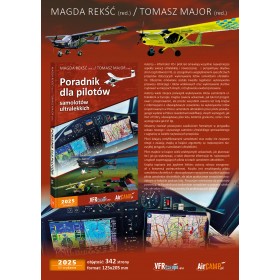

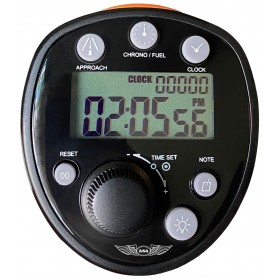


feedback Zgłoś komentarz